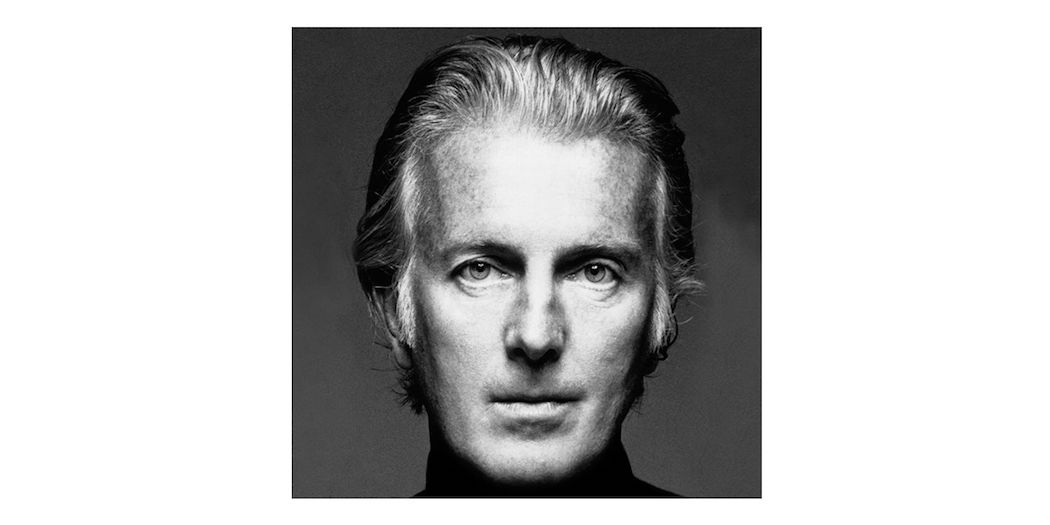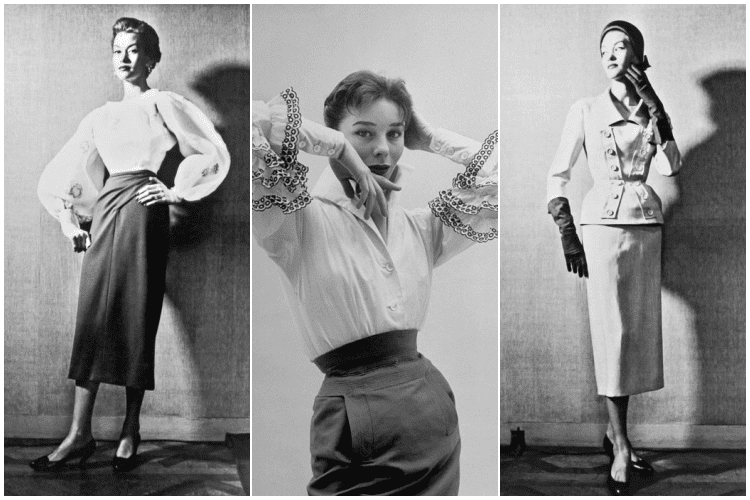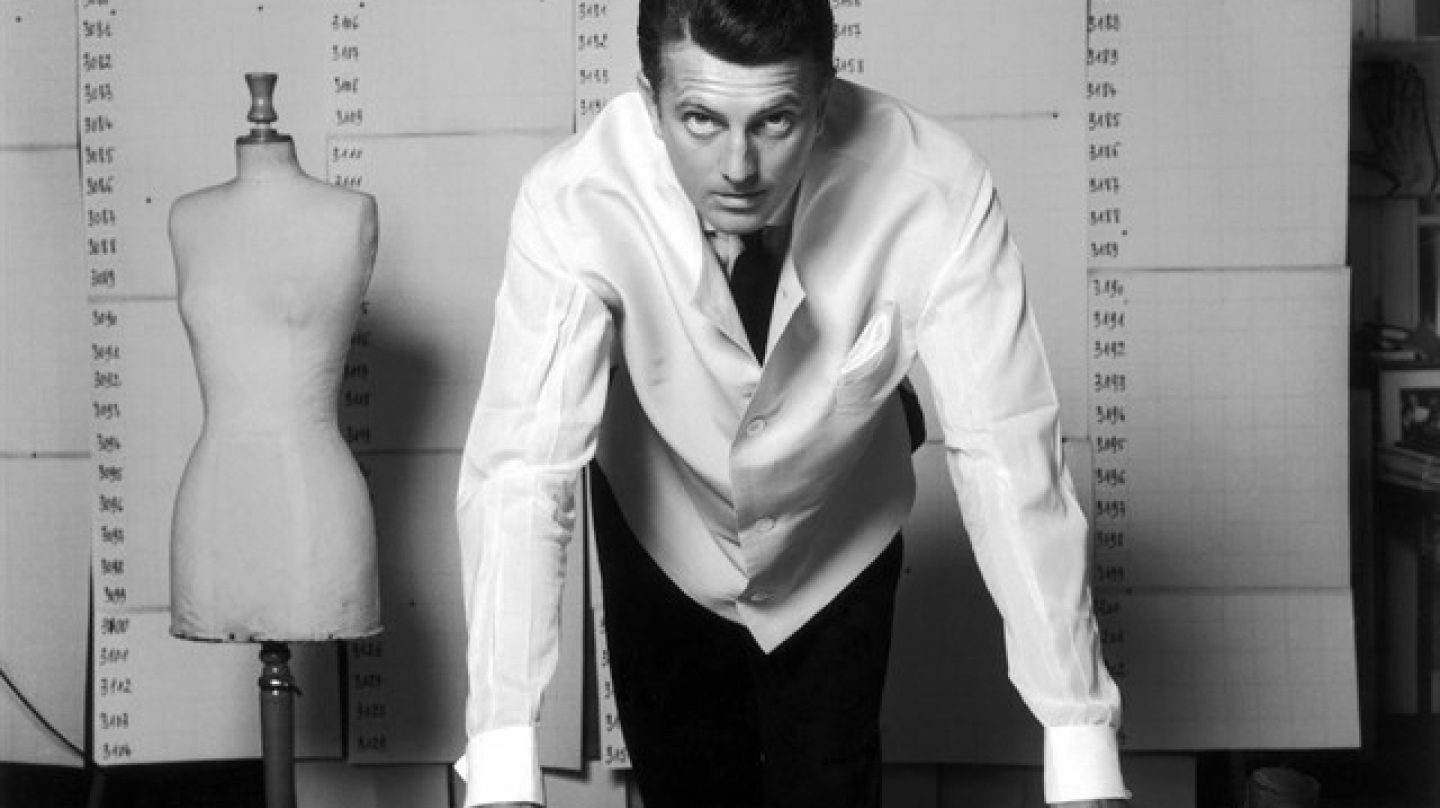His elegant, pure, architectural, fresh and feminine designs are the paradigm of good taste associated with the golden age of fashion. Every classy woman of the 60s wanted to wear their clothes. We are talking about Hubert Taffin de Givenchy, who passed away on March 10. The firm he created in 1952 and at the head of which he would be for more than 40 years has become a worldwide reference. Today we pay tribute to him with a review through the history of the firm, his designs and, ultimately, his legacy for fashion.

Hubert by Givenchy.
His story begins, like almost everyone’s, in a small workshop where he shaped his creations. His creations were influenced from the beginning by the know-how of Cristobal Balenciaga, his great source of inspiration. From him he would inherit his way of understanding couture and his way of implementing architecture in his designs.
Audrey Hepburn, his muse
But if there is a name that is intrinsically linked to Hubert as a designer and the Givenchy firm this can not be other than that of Audrey Hepburn. She, his great muse and he, the architect of the designs that would make her what she is today, a myth of style and elegance.
The designer dressed her in more than 10 films, including Sabrina or A Face with an Angel. The black dress in Breakfast at Tiffany’s attire was her work, and in How to Steal a Million there is an amusing conversation between Hepburn and O’Toole in which the latter tries to convince her to dress in more modest clothes “if only to give Givenchy a night off”.

Audrey Hepburn in Breakfast at Tiffany’s.
But she was not the only one to entrust the designer with her wardrobe for special occasions. Among his clients of the time were Grace Kelly or Jackie Kennedy.
The designer left behind him a way of understanding fashion and a long list of flagship garments, already from his first collection. In his first runway show, model Bettina Graziani opened the show with a two-piece white skirt and blouse. That blouse is known today as the “Bettina blouse” and has become one of her most recognizable pieces. As well as the sack dress, which she introduced together with Balenciaga in her Spring-Summer Collection of 1957.
One of the pioneers of prêt-à-porter.
His classic and timeless style makes us forget his modern and innovative side, and Hubert is also consideredone of the pioneers of prêt-à-porter. He specialized in making two-piece designs, the “separates”, so that with fewer garments and combining them together women could create different looks for every day. His Givenchy Université collection would be his first luxury ready-to-wear line, manufactured in Paris with industrial sewing machines imported from the United States, quite an achievement in the 1950s.

Images from Givenchy’s first collection. In the center, Bettina Graziani and the famous blouse to which she gave her name.
Synonymous with classic timelessness, he managed to adapt to the passing of the years until, in 1988, he sold the firm to the LVMH group. A few years later, in 1996, Hubert de Givenchy left the firm to which he had given his name. After him, came to Givenchy: John Galliano, Alexander McQueen, Julien Macdonald, Ozwald Boateng and Riccardo Tisci, until the current creative director of the firm, Clare Waight Keller.
John Galliano and Alexander McQueen, his early successors
John Galliano was the first to pick up Hubert’s baton, although the conglomerate would have other plans for him. Galliano would take the helm of Dior while as creative director of Givenchy it would be the turn of Alexander McQueen. With them began the era of the fashion designer as rock star.
If there is a parade that is remembered of the McQueen era at Givenchy is that of his Spring-Summer 1999 collection. More than a fashion show, a performance in which models shared the catwalk with two robots who, at a certain point, sprayed paint on the model Shalom Harlow, who was spinning on a platform dressed in a simple white dress attached to her by a simple belt. The clothes? Much more futuristic and sensual than usual for the designer.

Spring-Summer 1999 Collection.
If Hubert was asked about his successors? The answer was clear. Galliano came to say that he did not do fashion, that he was only in office to sell shoes and bags and to create spectacle. And it is that, without doubt, after the departure of its founder the firm gave a turn of 180º, a turn that was accentuated more if possible with the arrival at the maison of the until recently creative director of the firm since 2005, Riccardo Tisci.
Riccardo Ticci marks a before and an after
The Italian managed to bring the brand back to the center of the news. As in the 60s with Hubert, in the 2010s, the celebrities wear Givenchy. Mind you, the muses have changed. Kanye Wes, Jay Z, Beyonce or Madonna have been some of the new faithful of the firm. But if there is a name that is inevitably linked to the designer, it is that of Kim Kardashian.
Criticized or defended, elegant or strident, approved or not by the original Givenchy, the truth is that Tisci’s role in the firm has been fundamental. His hip-hop aesthetic has marked a new era in the fashion imaginary: the return of the sweatshirt as an object of desire, urban style, baroque prints, oversize T-shirts… His latest proposal? The Haute Couture Spring-Summer 2017 collection.

Spring-Summer 2017 Collection.
Clare Waight Keller, new artistic director
In charge of replacing him has been Clare Waight Keller, previously at the helm of Chloé and the first woman to be at the helm of the brand after 65 years of history. In her Spring-Summer 2018 collection you can already glimpse the brushstrokes of what will mark her creative direction. A more relaxed and structural air typical of the silent luxury that defines it and that brings it closer to the origins of the firm.

Spring-Summer 2018 Collection.
Audrey Hepburn used to say that Givenchy dresses were protection against evil. 65 years of history, seven different designers and thousands of garments later, the brand continues to be a world fashion reference.




